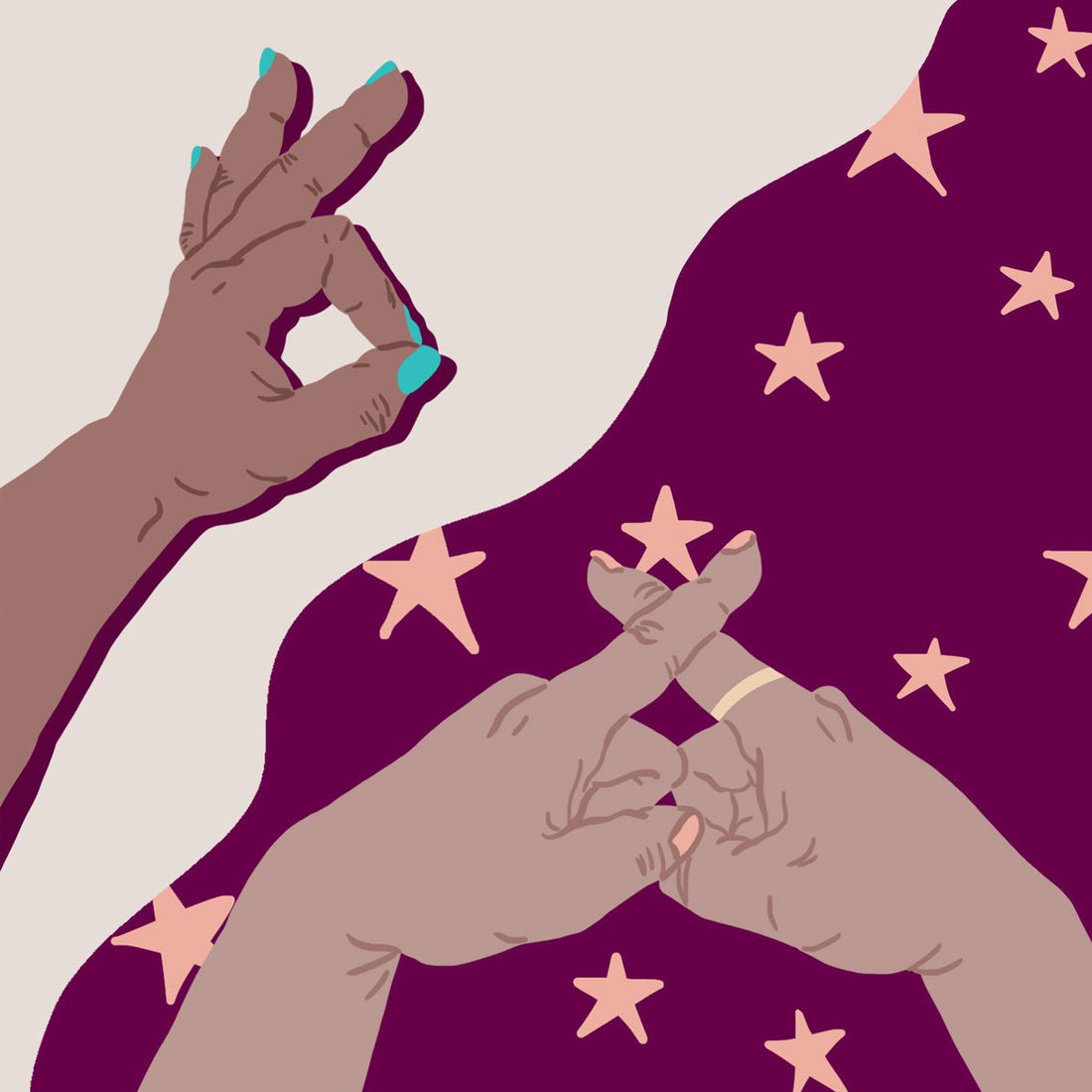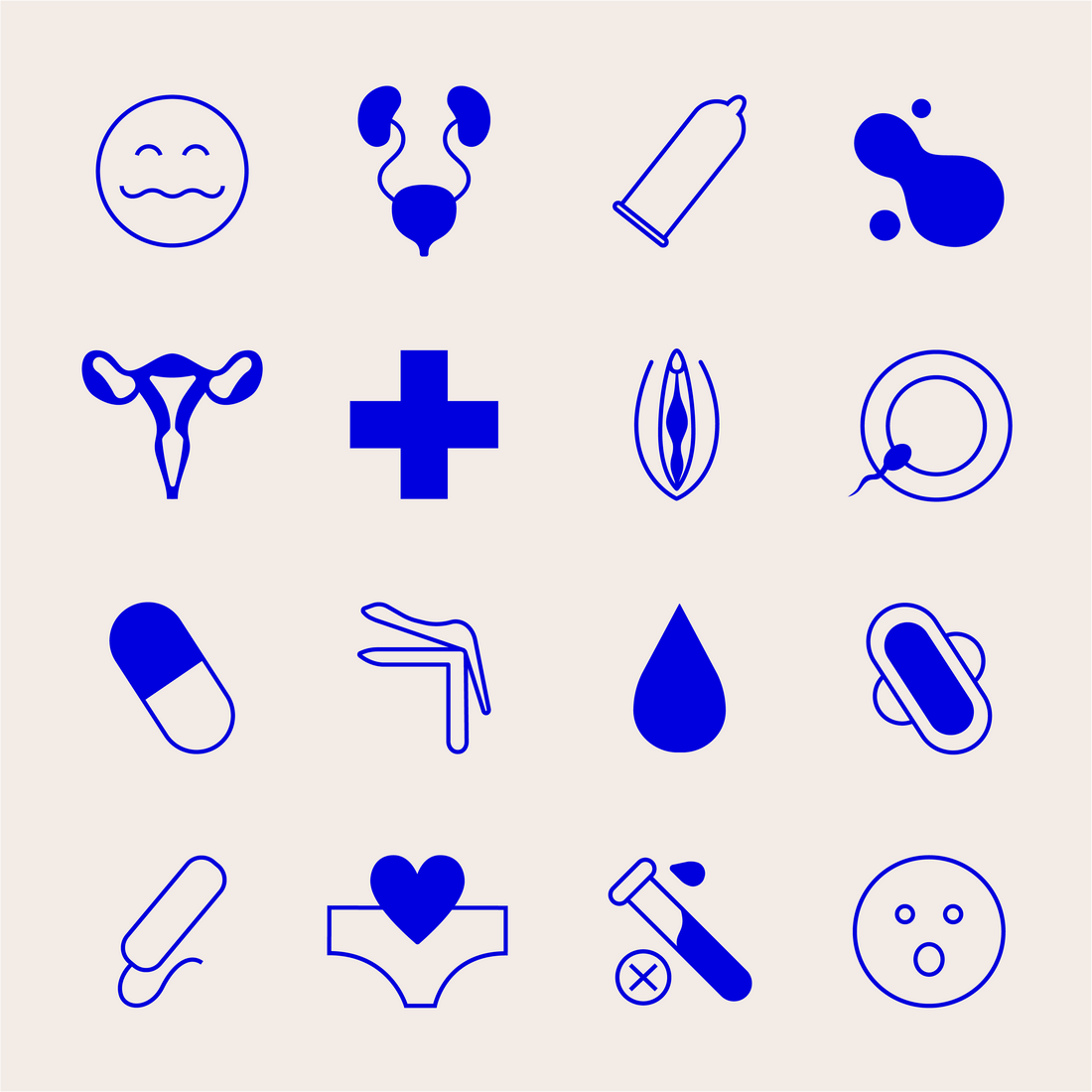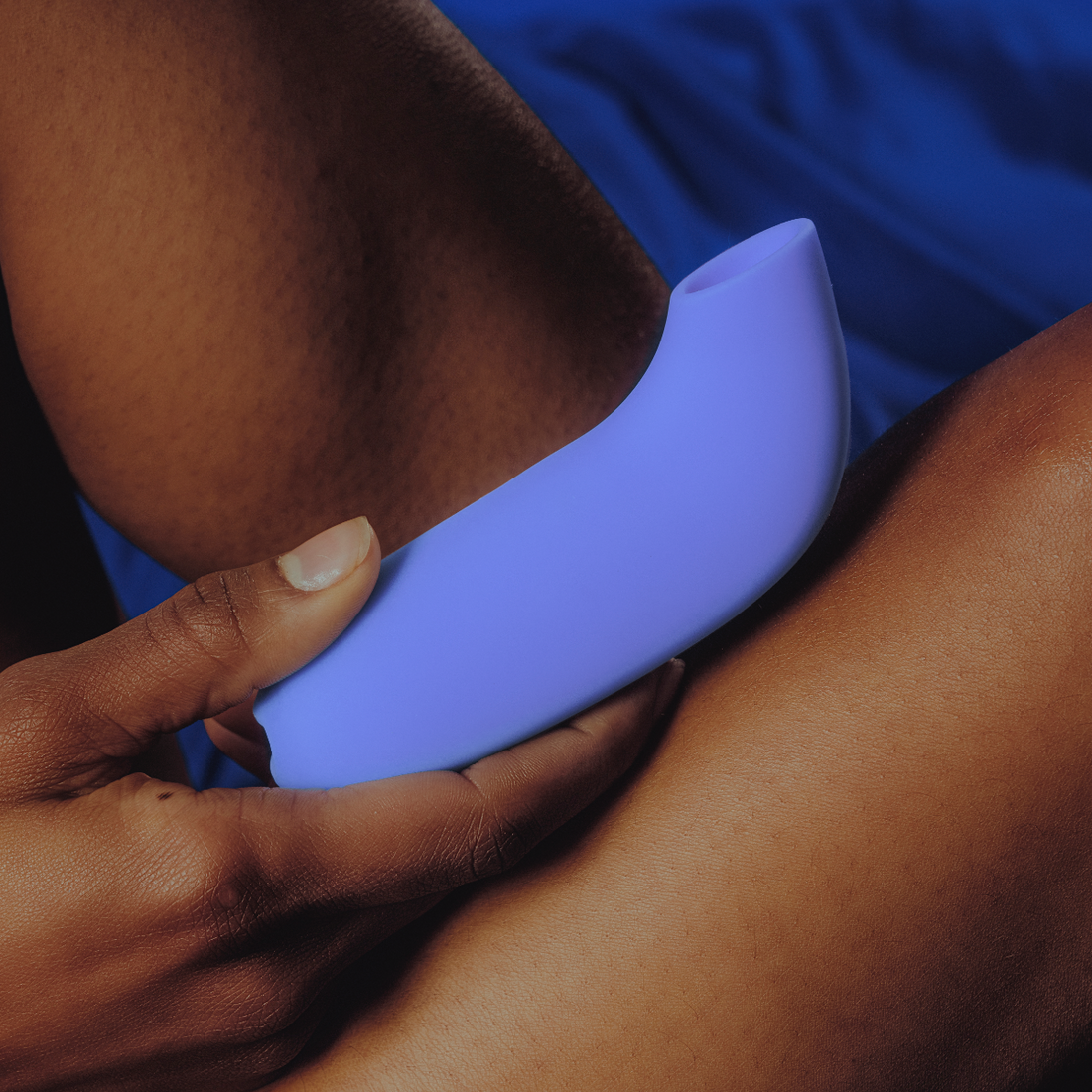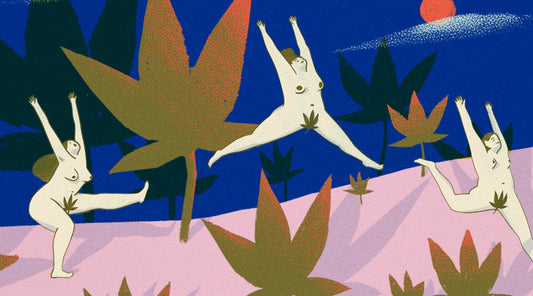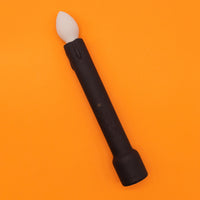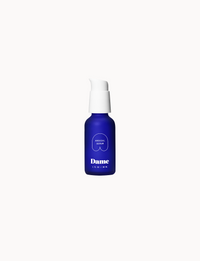As a queer, sex-positive sex and wellness writer, I have a collection of sex toys that my nightstand alone can’t hold. I have stacks of sex books on every window-ledge, table, shelf in my apartment; and I’m my pals’ go-to person for any sex and sexuality questions. I even dance with butt plugs on internet. Basically, I’m what you’d probably call, “sexually empowered.” However, what if I told you I’ve never been able to make myself come? Wellll, that’s true.
I have what most sex experts– sexperts if you will– and educators refer to anorgasmia. If anorgasmia sounds like a creepy-crawly creature you inspected under a microscope in high school biology, you’re not the only one. As sexpert/activist, August McLaughlin, author of Girl Boner and Girl Boner Journal, says, “anorgasmia is somewhat common, especially in women, but most folks have never heard about it.”
Understandably curious about anorgasmia, and what exactly it entails, I took my questions to my go-to sex educators and experts... Because I’m nothing if not apt at using my career to make sure you folks have the answers to the questions I once had about sex and sexuality.
Read on below to learn what anorgasmia is, how common it is, and tips for overcoming (read: overcuming) it.
What Is Anorgasmia?
Sometimes known simply as “delayed orgasm” or “orgasmic disorder,” anorgasmia is defined as the persistent or recurrent difficulty, delay in, or absence of attaining orgasm after sufficient sexual stimulation, which causes personal distress. This distress subsequently makes it even more hopeless to achieve orgasm.
New-York Based obstetrician and gynecologist Dr. Kameelah Phillips tells Dame, “there are different types of anorgasmia, but the uniting theme is the inability to orgasm.” Primary anorgasmia– sometimes called “lifelong” anorgasmia– means that the person has never had an orgasm. While secondary–sometimes called “acquired” anorgasmia– means that the person has ridden the pleasure waves before, but has suddenly lost this ability. According to Phillips, “most secondary anorgasmia is a result of medication, or either physical or psychological medical issue.”
...meaning, that the person has ridden the pleasure waves before, but has suddenly lost this ability.
There are two other classifications that are occasionally used: generalized anorgasmia and situational anorgasmia. Generalized anorgasmia is the inability to have any orgasm is any situation, AKA with or without a partner. According to Marla Renee Stewart, sexologist with Velvet Lips Sex Down South , situational anorgasmia is probably the most common. This is when you’re able to have an orgasm only during certain and/or specific circumstances; for instance: only with a vibrator, only through masturbation, or only with clitoral stimulation.
Stewarts notes the importance of the distress aspect. “Anorgasmia specifically names the dissatisfaction with your inability to orgasm,” she says. “In fact, sometimes sex experts and sex therapists use to the term to when someone is dissatisfied with the duration it takes to, or the power of, their orgasm,” she says.
Keep in mind that the ideas of “power” and “duration” are subjective, and there’s no medically agreed upon definition of what constitutes “too long” or “not powerful enough.”
How Common Is Anorgasmia?
Folks of any gender can be anorgasmic, but research suggests it’s three or four times more common in folks who were assigned female at birth. The often-cited figure is that 10 to 15 percent of vulva-owners have anorgasmia. But Dr.Phillips says, “The rates of anorgasmia for women can vary from 4 to 5% for primary anorgasmia to upwards of 25% for situational and/or secondary anorgasmia.” Indeed, those rates are probably higher than you’d originally have thought, huh?
Folks of any gender can be anorgasmic, but research suggests it’s three or four times more common in people who were assigned female at birth.
Still she says, even those stats may be low. That’s because in general any sexuality studies specifically as they look at female sexuality are slim and hard to get funding for. “Most sexual health research focuses on men,” she says.
What Causes Anorgamia?
As it turns out, what causes anorgasmia is as individual as your yoga practice. That’s because anorgasmia is a blanket term, with a wide range of causes—physical or psychological.
On the physical front: Dr. Phillips explains that vaginosis, vaginal dryness, endometriosis, trauma to the pelvic floor, diabetes, menopause, untreated STI’s, or any other chronic disease which may impact sexual functioning may be the root cause. Phillips says, “Anything that causes pain during sex can lead to sexual frustration depression and then secondary anorgasmia.” If your anorgasmia is stemming from a physical ailment, addressing or controlling it is the best way to manage and work through anorgasmia, she says. Makes sense. (Related: A Physical Therapist’s Guide To Combating Painful Sex).
Note: While you should book an appointment with a healthcare provider to rule out medical causes, Stewart says physically, it’s not a red flag if you take you longer to climax or if your climax feels slightly different. Aging and menopause, taking certain medications, stress, and even where you are in your menstrual cycle can affect the experience of your orgasm—some fluctuation is normal and not cause for concern. So, don’t freak out if your orgasm isn’t exactly the same every single time.
But, according to Dr. Alexander Bingham, a clinical psychologist based in NYC says, more often than not, anorgasmia is caused by the psyche. “In twenty years of working with people, I have found time and time again that the inability to climax is caused by the brain.” He explains, “Whether conscious or unconscious, many folks opt to avoid feeling sensations that might be unpleasant, scary, or simply too intense to handle.”
...more often than not, anorgasmia is caused the psyche
Bingham and other sexperts tell Dame that shame around a past sexual encounter, fear about sexual performance, a history of sexual trauma, religious pressure and guilt, anxiety and depression, stress, and relationship issues can all manifest as an inability to orgasm. Why? “Usually when we’re trying to block fear, sadness, or anger, we contract our body and tighten our muscles. This creates a physical block in our body and can interfere with many physical processes, including the ability to achieve an orgasm,” explains Dr. Bingham.
If this sounds familiar, McLaughlin says a sex therapist or psychiatrist is your best bet. “They can help you unlearn these messages, work through these fears, and cultivate pleasure and acceptance around your sexuality. There are so many benefits of this kind empowerment... orgasms included.”
Dr. Phillips adds: “Decreased desire and anorgasmia is a common side effect of many psychiatric medications, especially SSRIs. Depending on the person, a medication(s) may be added or changed and can help minimize those side effects.” (See more on sex and SSRI’s here)
Is There A Solution?
Good news: Most experts agree that anorgasmia does not have to a permanent body-state. (I for one am very pleased to hear that). Dr. Phillips explains, “For many women this issue is often multifactorial and involves seeking out the help of a sexual therapist, psychiatrist, and/ or doctor.” Together, they can help you identify what could be standing between you and Orgasm Satisfaction:
But because the pleasure and sexual functioning of people with vulvas is an underdeveloped field in the medical system, radical sex educator and LGBT activist Sloan Nefertari explains: the plan of action for tackling anorgasmia needs be holistic.
That’s why after addressing your anorgasmia from a medical stance, the sexperts suggest strengthening your connection to your body. How, exactly? 1. Educate yourself and, 2. Discover your desires. More on each below.
Educate yourself
McLaughlin believes that anorgasmia sometimes stems from a lack of comprehensive sex education. Case and point: Research shows that only 18% of women orgasm from penetration alone, while more than a third of folks say they need clitoral stimulation to climax during penetration. Still, people feel either ashamed or dissatisfied when they can’t climax vaginally. Stewart says, “In my practice, I have a lot of folks who feel dissatisfied because they haven’t reached an orgasm through vaginal penetration. And I have to tell them that it really isn’t problem!” Instead, they just haven't learned how important other types of stimulation is for arousal and climax.
Research shows that only 18% of women orgasm from penetration alone, whole more than a third of people say they need clitoral stimulation to climax during penetration
The solution: Read articles that speak with knowledge, comfort, and confidence about sex and bodies. Read books on sex and sexuality like Our Bodies, Ourselves and Emily Nagoski Come As You Are. Listen to podcasts. Watch sex-positive moves and shows. Talk to your sex-positive friends about it, if you can/feel comfortable.
These tools can also give you the language to communicate what you want or need to reach climax.“Many people never learn how to communicate their sexual wants and needs.” And if your partner isn’t open to learning with you? *Raises red flag*. That’s a real bad look.
Discover what you desire
Of course, you want your partner(s) to intuite what you need to get from point A to point O, but “Most people don’t know what they desire, so how can they expect to feel pleasure,” says Stewart. Good point!
Where does your satisfaction lives? Where does your pleasure? What kind of sex are you having and what kind of sex do you want to be having (either with yourself or someone else?) What turns you on?
Where does your satisfaction live? Where does your pleasure?
To find the answers to these questions, Sloan recommends touching yourself. “Explore the things that you like or might like within the privacy of your own body and mind,” they suggest. That might include a vibrator like the Eva or Fin and/or visual or audio erotica/porn, or not. (You might even try tantric masturbation). And it’s okay if this takes some trial and error. As Stewart says, “Usually it takes a long time to learn what you desire, and then give that to yourself.”
Don’t know where to start? Stewart says that’s normal. “Sometimes people feel creatively blocked when they think about what they might desire sexually.” For that she recommends “a moderate and ethical consumption of porn. This can help open you up to ideas around what you might find attractive.” Talk about an enjoyable a tantalizing homework assignment. (Related: What Does Ethical Porn Look Like?)
Takeaway
While anorgasmia is somewhat common, experts emphasize it’s still important to prioritize your orgasm! “When we hear the message that relatively few women or people with vulvas experience orgasm, it's easy to internalize that message and think your orgasm is unimportant, says McLaughlin. But it is!
While as Stewart says, “Of course it’s possible to have pleasure without an orgasm.” She always says, “I can’t tell you that it’s something a vulva-owner shouldn’t try to work through and address. Instead, I encourage folks with anorgasmia to be more gentle with themselves, seek help, educate themselves, and learn what turns them on.” That’s a ride I, for one, can get behind. Or under.
